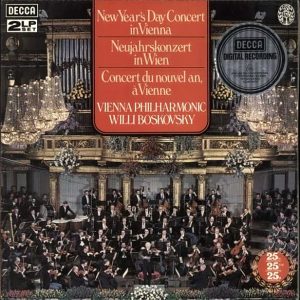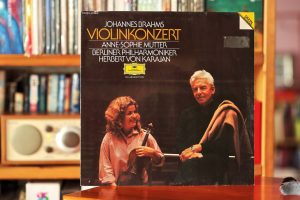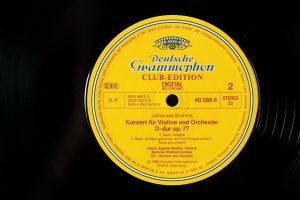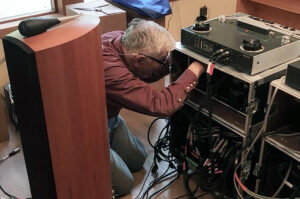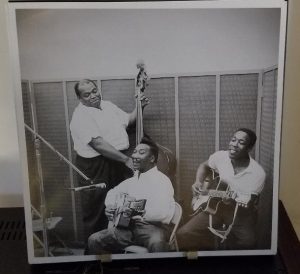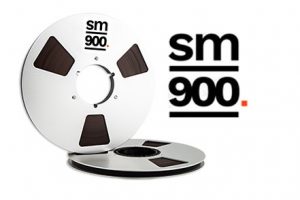It is the story of birth of digital audio, as well as a journey through the 1970s and 1980s, the best period in the history of digital recorders, and finally the story of their unique representatives—reel-to-tape recorders from MITSUBISHI Mitsubishi. (Part 2 can be found HERE)
DIGITAL SOUND RECORDING – method of preserving sound in which audio signals are transformed into a series of pulses that correspond to patterns of binary digits (i.e. 0's and 1's) and are recorded as such on the surface of a magnetic tape or optical disc. ENCYCLOPÆDIA BRITANNICA (www.britannica.com; access: 09.04.2020)
Analog and digital recordings are two significantly different sound recording methods. Although it is hard to believe, the history of digital recordings is least known, especially of the first ones. It would seem that the opposite should be the case. While researching information on this topic, I encountered numerous white spots, gaps and partial information in the available sources on this topic. Paradoxically, the analog audio recording systems are much better understood and described.
Marconi-Stille magnetic recorder using a steel tape presented in 1935
Where do these problems come from? I am not sure, but if I were to guess I would think that when the first digital tape recorders found their way to recording studios, almost no one in the world understood what they were, how they worked and what consequences using them would bring. While Edison's phonograph was a relatively simple—brilliant but simple—mechanism, digital recording at the time was a state-of-the-art activity in the world of science and few people knew anything about it.
An important factor facilitating "forgetting" could also have been the rapid evolution of digital systems and the lack of compatibility between them. Each company offered its own solutions, and each publisher voted for one of them or the other with their money—but almost always they chose a different format than used by competition. Perhaps the combined displacement mechanism and confusion of users overwhelmed by the rapidly changing solutions worked in this way. For them, the "digital world" was absolutely esoteric at the time. And for me, this is the most interesting period of the most interesting solutions, created out of passion, based on in-depth technical knowledge and huge financial investments.
In a sense, it reminds me of historians' problems with the beginning of Christianity and the first communities, and then of the so-called "Dawn of the Middle Ages." In both of these cases there are very few written testimonies and it takes a lot of work and effort to reach some agreement. Being a modest enthusiast, not aspiring to be "archivist-historian," I would like to say, however, that I had to face similar problems when preparing this article. Researching information, analyzing it and understanding their actual content took me almost eight months. I think it was worth it and I hope that after reading this article you will agree with me.
I discussed the beginnings of digital technology in audio and the first commercially available recordings in the form of LPs in the article titled Digital audio in the vinyl world: Trojan horse or necessity? (HERE). You will find there information about the first Denon and Soundstream digital tape recorders. Based on this information, this time I would like to talk about digital recordings in a broader context and continue this story further—in the 1980s and 1990s.
Denon DN-023R digital recorder from 1971
The article has been divided into two parts. In the first one, I will discuss the first commercially used digital recorders—reel tape recorders. I will tell you about solutions developed by Nippon Columbia, Soundstream, 3M, Decca and—finally Sony. We will take a look at the first recordings and talk about the technique. This is to prepare us for the second part, in which I will tell you more about yet another manufacturer, in my opinion one of the most interesting ones, namely MITSUBISHI.
They proposed stereo and multi-track digital tape recorders, which were used in the largest and most important studios in the world, where the best sound engineers worked and that were used by the most known artists. And yet finding information confirming that this or that album was made using a Mitsubishi tape recorder, turned out - except for a few cases - extremely difficult. I will point out some of them in the second part of this article and discuss the sound they offer. Let's get to it!
PART 1: Before MITSUBISHI
The November 28, 1992 issue of Billboard magazine reports the end of the MITSUBISHI adventure with digital reel-to-reel tape recorders:
On December 31, Mitsubishi Pro Audio will end sales of its digital 32-track ProDigi tape recorders and two-track mastering digital tape recorders in Europe, marking the first stage of leaving the professional audio industry.
ZENON SCHOEPE, Mitsubishi Ceasing Pro-Digi Sales Marks 1st Stage Of Pro-Audio-Biz Pullout, Billboard Nov. 28th 1992, p. 76
As the author adds, the company will provide all its devices present on the market with proper service and customer support. And we are talking about 150-200 (it is not certain how many exactly) tape recorders of this type located in studios in the USA, as well as 150 pieces of 32-track and 200 stereo machines of this company in Europe, each of which cost up to 175,000 US dollars. Together, this gives a number of between 500 and 550 tape recorders in the US and Europe, which in total is worth five million USD. Among the reasons for Mitsubishi's departure from the "pro audio" market, the most important one seems to be the one given by Adrian Bailey, department manager of sales and marketing: "the global crisis and the need to restructure production within the Mitsubishi group."
It might seem insignificant, and the message could have related to a minor technical curiosity, were it not for the fact that in this way an important chapter in the history of the art of sound recording was closed. One of the best digital audio recording systems ever invented retired. And although the 1990s were a time of inexpensive solutions, such as ADAT and RADAR, still in 1992 Lionel Richie's single Do It To Me, recorded on a MITSUBISHI X-880 reel-to-reel tape recorder and mixed to stereo on the same company X-850 model reached the first place on Billboard's charts.
DIGITAL TAPE RECORDER: going for the throne
The basics of digital audio coding go back to the year 1938, when the British engineer ALEC A. REEVES invented PULSE CODE MODULATION, a procedure that converts an analog signal into individual pulses of constant amplitude that could be recorded and transmitted. Already in 1951 the first computer playing music was developed—a powerful, space-consuming CSIRAC (Council for Scientific and Industrial Research Automatic Computer). This is the first Australian computer, the only system of this type still in existence (today at the Melbourne Museum). However, we had to wait for the digital recording of sound until 1968.
"Father" of the digital PCM signal, Alec Harley Reeves (1902 –1971)
At that time, the first working digital recorder was developed that set the direction for the development of this type of product for many years—at least until the early 1990s, if not even longer. The recorder, prepared by engineers of the Technical Research Laboratories of the Japanese public television NHK, under the leadership of Mr. HEITARO NAKAJIMA, was large, expensive, worked using PCM encoding and used 2" video tape on reels—similar to the one used by classic analogue tape recorders and mass computer memories. This product class was therefore called DIGITAL TAPE RECORDER.
NIPPON COLUMBIA
The first company to make and release a digital recording was Nippon Columbia, known outside of Japan as Denon. However, this was not their development, but NHK's. In 1967, engineers of the Japanese TV had a prototype of a monophonic recorder ready, which worked with a sampling frequency of 32 kHz and 13-bits, in which they used an analog compander to improve dynamics. The electronics occupied two cabinets the size of a huge fridge each, and the signal was recorded on a 1" wide video reel tape, recorded on a modified video recorder with a Hitachi mechanism with four rotating heads.
From today's point of view, these solution seem primitive, but at the time it was a technical state-of-the-art and no one else was able to repeat this achievement for a long time. The device was developed thanks to enormous pressure from the Japanese government, which - along with private investors—had invested a lot of money in research to help make the best broadcast of the Olympic Games in Tokyo in 1964. Thanks to money, state research centers developed quickly and took up other fields related to image and sound, including 'digital' sound.
The first ever album with the sound recorded digitally: Steve Marcus & Jiro Inagaki Something (Nippon Columbia NCB-7003)
Anyway, as early as 1968 a stereo version of the NHK prototype was ready. Denon engineers invited to presentations and trial recordings noticed the possibilities opening up before the audio and ordered one tape recorder for their recording studio (it seems that these first recordings did not survive till today). Using this experimental recording system on January 11, 1971, under the direction of Dr. TAKEAKI ANAZAWA, a Denon engineer, the world's first digital and released to the public recording - The World Of Stomu Yamash'ta 1 & 2 by Stomu Yamash'ta, a Japanese drummer, keyboardist and composer.
It just so happens that the first digital registration that was published was created a few days later, on January 25, 1971 and it was the album called Something by Steve Marcus & Jiro Inagaki (Nippon Columbia NCB-7003). On January 27, the third session was recorded, the Metempsychosis by Stomu Yamash'ta. All these recordings were released, but these were experimental releases and they did not even feature proper labels, only white ones with stamps. The HHK digital tape recorder did not offer the possibility of editing, therefore recording sessions looked exactly the same as in the case of direct-to-disc recording, without breaks and without overdubbing subsequent tracks.
The problem, of course, was that it was a stereo recorder. Based on this experience, Denon's research department developed its own converter allowing recording of PCM signal on video tape (in the areas responsible for black and white colors) and it was an eight-track recorder. The DN-023R system was sampled at 47.25 kHz and resolution of 13-bits. It also utilized the Hitachi 4-head video recorder. The first recorded performer was Smetana Quartet performing String Quartets K.458 and K.421, recorded in Tokyo on April 24-26th and released in October 1971.
Early digital tape recorders were stereo systems, and they still were extremely complicated. It took Denon until 1978 to develop their first multi-track digital tape recorder—it was an eight-track DN-034R system, a recorder with a sampling frequency of 47.25 kHz and resolution of 14-bits, which together with pre-emphasis gave the equivalent of 15.5-bit resolution.
SOUNDSTREAM
The US had to wait for their first digital recordings until 1976. A year earlier, Soundstream was founded in Salt Lake City, Utah by Dr. THOMAS G. STOCKHAM. It was an American scientist and inventor associated with MIT, where he collaborated with Amar Bose (later Bose Corporation) on the implementation of digital devices for acoustics measurements. Stockham is also known for participating in the commission that was established to determine the truth regarding the tapes in the Watergate scandal.
Thomas G. Stockham with his Soundstream recorder
In 1975, he leaves MIT and establishes Soundstream Inc. for one purpose: the development of a digital tape recorder. The company has developed a 16-bit recording system that uses a 16-track tape drive from Honeywell, so-called "instrumentation tape recorder," or a recorder for recording measurements, etc. Drives of this type, due to their exceptional durability and reliability, were used by NASA in the mid-1980s. Stockham used the Honeywell 5600E transport and built his own electronics.
The prototype of the tape recorder was used in 1976 to record The Mother of Us All by Virgil Thomson, performed by Santa Fe Opera, for the New World Records label. It was supposed to be a "backup" recording for direct-to-disc one. The tape recorder was a two-track and recorded a PCM signal with a sampling frequency of 37 kHz and a word length of 16-bits. Unfortunately, its sound was criticized during the AES Convention. Critics included Jack Renner and Robert Woods, the founders of Telarc.
Thanks to their comments, Stockham improved his system and in 1977 a recorder was ready that offered four channels of 16-bit recording with a sampling frequency of 50 kHz. The first commercial RECORDING using the Soundstream system was the one of Diahanna Carroll and Duke Ellington Orchestra entitled: A Tribute To Ethel Waters prepared for the Orinda label in January 1978. The recording system developed by Soundstream was used by the then small company Telarc, which was the first one in the USA to release an LP with a digitally recorded signal in 1978,. It included: Stravinsky and Firebird as well as Borodin and Polovtsian Dances performed by the Atlanta Symphony and Chorus conducted by Robert Shaw (Telarc 80039).
Soundstream was, in my opinion, one of the best digital recording systems ever made.
3M
When in 1977 the press reported on new Mitsubishi digital tape recorders, Billboard mentioned the undergoing work of 3M on this type of solution—a company known so far mainly from the production of magnetic tapes. Its Mincom branch had been working on it for several years and as a result of these works a complete mastering system called 3M Digital Audio Mastering System was developed. It included a 32-track tape recorder (1" tape, 45 ips) and 4-track mastering one (½" tape). Both offered a resolution of 16-bits (two converters, 12 and 8-bits, per channel) and a sampling frequency of 50 kHz. They cost USD 115,000 and 35,000 respectively.
3M's Digital Audio Mastering System from 1978—the device between two tape recorders is a controller
The first user of the M3 tape recorder was Tom Jung, founder of the Sound 80 recording studio, later the head of the DMP label, who ordered it a year ahead of official launch. In December 1978 he released his first recordings: Flim & The BB's by Flim & The BB's and Appalachian Spring by Aaron Copeland performed by St. Paul Chamber Orchestra. Among the early musicians who used it, lets name Ry Cooderaz and his Bop Till You Drop and Donald Fagen with his The Nightfly. The Appalachian Spring recording was created as a backup of a direct-to-disc session. It turned out that the digital version sounded better and it was chosen for LP pressing. In 1979, this album won the Grammy Award as the first digital recording in history.
DECCA
The system developed by Decca also confirmed that this was a path that others would follow. This is one of the audio companies with the greatest achievements when it comes to recording techniques. Work on their own recording and editing system lasted from the mid-1970s under the direction of Tony Griffith. At the AES January convention, he said that already in 1977 he made "experimental digital recordings" and "the label was convinced that it had to start building a library of digital recordings."
In 1978, the company's engineers presented a heavily modified IVC800 video recorder, using a 2" tape and A/D and D/A converters from Ultra Analog 2040 and Apogee analog filters. The system offered a resolution of 16 bits and a sampling frequency of 48 kHz. Although the transport modified by Decca was able to record an 18-bit signal, there were no A/D converters that could match that. Decca introduced the first 20-bit system only in 1991.
The digital recorder in question was a stereo system. As Griffith said at the convention, "multi-track recorders were not considered." And further: "For Decca Record Company, the basic method of recording was the stereo recording of material with classical music, and the multi-track was only a "backup." Were actually any analog multi-track tape recorders also used during digital recordings? We don't know that.
The first Decca LP based on digital recording: New Year's Day Concert In Vienna
After making test recordings during the summer and fall of 1978, Decca debuted with an official album a year later—it was a New Year's concert of the Vienna Philharmonic under Willi Boskovsky. The double-record release was designated D147D2. This was the first European commercial release with digitally recorded material. Decca's recorder was constantly improved over the years, but in 1997 Polygram, the parent company, closed its Recording Center, thus ending the 60-year history of innovation.
SONY
The day after Decca's first commercial session, Philips started its digital recording program, during a four-day session recording the Handel's Concerti Grossi Op.3, conducted by Sir Neville Marriner, using the Sony PCM-1600 stereo system. The release was designated LP 6514114.
How did this happen? Nothing is lost in nature—soon after the presentation of Denon's first digitally recorded LPs, head of NHK engineers, HEITARO NAKAJIMA-san, he began working for another corporation, Sony. The company was then "wounded" by the failure of its electronic calculator SOBAX (1967) and needed fresh blood and success.
Two years after Nakijama-san became the head of the Audio Technology Center at Sony, along with two other engineers, Mr. Jun Takayama and Hiroyuki Suzukawa, he began working on a digital recording system. The basis was his work with PCM coding from the time of NHK. In 1974 a prototype of the X-12DTC tape recorder was ready. It was a video tape recorder with a 56-channel STATIONARY head using a 2" tape. The transport itself weighed 250 kg. The device was presented the same year at the Audio Fair in Japan.
Encouraged by this event, Mr. TOSHITADA DOI, later the co-creator of the Compact Disc format, joined the team. The goal was to design a smaller, more compact recorder. Using the idea of one of the engineers, the team used a video cassette recorder, a system called Betamax, introduced to the market in 1975. A group led by Mr. Nakijama prepared electronics encoding 14-bit PCM signal.
The system was named PCM Processor and was presented at the Audio Fair in 1976. The commercial debut took place in 1977 - this is how the PCM-1 was created, a digital processor that could be used to record a two-channel 16-bit signal with 44.056 kHz audio sampling on Betamax or U-matic video tape. And U-matic was a recording system developed jointly by Sony and JVC, based on VCR video cassettes. It became the basis of modern audio, mainly as a mastering format.
Sony PCM-1 – the first PCM processor of this brand—photo presents its electronic circuits
The point was that signal from any type of tape recorder, be it analog or digital, was recorded onto a U-matic tape and in this form was taken to the pressing plant - first it was used for LPs and then also for CDs. Let's add that these were relatively expensive systems, because the Sony PCM-1600 system, the successor of PCM-1, cost USD 40,000. The successors of this system were PCM-1610 and PCM-1630, and U-matic—using a professional video tape with a width of ¾"—remained the basic mastering system until the late 1990s.
It turned out to be a technically predictable system, and at the same time small in size. Equally important, however, as it turned out, was something that in every field, including audio, is the most important element—acquaintances and friendships. This was also the case with Sony and its digital recorders. It so happened that two important people became friends and gained mutual respect—we are talking about the founder of Sony, Mr. AKIO MORITA and the then conductor of the Berlin Philharmonic, coming from Austria, HERBERT VON KARAJAN.
As we read in the official history of the company, Maestro Karajan was a good, long-term friend of Mr. Morita. Sony's problem at that time was not whether it was possible to make a digital recorder, but the answer to the question "is there anyone who would be interested in it?" The conductor answered the question quite quickly. During one of his visits to the head of the company, he excused himself for a moment and asked Nakijama (head of the Audio Technology Center at Sony, previously at NHK) if he would show Karajan the prototype of the PCM-1 recorder.
They quickly prepared a listening session, during which they presented him a recording, which—not quite legally—was made by Sony engineers during the rehearsal before the concert in Salzburg—it was a digital recording of Il Trovadore in Vienna Staatsoper. The presentation was a revelation to Karajan. As Mr. Morita recalls, the conductor said: "This is a completely new sound." He became interested in this solution to the extent that the first recording tests of the finished recorder were carried out in Berlin, in his private studio. From then on, he always emphasized that he prefers sound from digital recordings, not analogue ones.
One of the early Deutsche Grammophone digital recordings from 1982.
The first official digital recordings for Deutsche Grammophone were, however, made using a completely different tape recorder—the above mentioned multi-track M3 recorder. The reason was simple—Sony did not yet have a commercial tape recorder of this type. The first album, on which we can find a characteristic vignette in the upper right corner, that reads "Digital Recording", was Die Zauberflöte (The Magic Flute) from 1980 (2741 001). The sound that was achieved was—in the common opinion—disappointing. It wasn't until later that cooperation with Sony was restored and they learned how to properly use this new tool.
Throughout the 1970s, recording studios implemented and developed 24 or even 48 (2 x 24 tracks) analogue recording systems. The producers knew them well, knew how to use them properly and liked them. U-matic was a mastering system, so a stereo one, which reduced its functionality.
One of the best known albums with classical music, with material recorded digitally: The Goldberg Variations by J.S. Bach performed by Glen Gould - version from 1981. The disc was recorded directly on U-matic stereo tapes using Sony system.
Sony responded to this demand in 1978 at the European AES Show, when it presented the prototype of the 1-inch, 24-track, digital reel-to-reel tape recorder PCM-3324. Although it never went into production, it was the direct predecessor of the ½-inch DASH (Digital Audio Stationary Head) system, the most well-known digital audio recording system on a reel tape in the entire audio history. As it turns out, it was not the only system of this type available, nor at all the most popular one, at least initially.
A TRIUMPH OF A REEL TAPE
The 1970s was the decade in which modern digital audio recording systems were born. It is also the time when analog reel tape recorders still reigned, primarily from Studer and Ampex, and in Japan also from Otari both as session tape recorders, offering 24 or 48 tracks, after synchronizing two devices, and mastering ones—multi-track material from a 1 or 2" tape was mixed into a stereo ½" or ¼" tape. Engineers were accustomed to this situation and taught specific procedures.
The first recorders, by Denon, Soundstream, 3M and Decca, were operated almost exclusively by their creators or people associated with the company. These were complicated devices for which both technical and trained sound director skills were required, and ideally they were also scientists. This is the most important distinguishing feature of all the devices in question. The first system of universal use was the U-matic, but it was based not on reel tape, but on video cassettes and was used only for mastering.
The second common feature of all these solutions was the use of reel mechanisms in the role of transport most often with a 2" tape. These were mechanisms originally designed to reproduce the video signal; the only company that used a different type of transport was the American Soundstream. An advantage of using reel drives was their similarity to analog systems. From a psychological point of view, this was very important because the sound engineers were afraid of new products that turned the entire structure of the recording process upside down.
Dire Straits, Brothers in Arms released on two 45 r.p.m. discs by the Mobile Fidelity
To find out wow it looked in the real world one can read the memoirs of Malcolm Atkin, technical director of AIR Montserrat studio, from the time when the Dire Straits album Brothers in Arms was recorded there.
We owe the Dire Straits album Brothers in Arms to AIR. We recorded it in Montserrat. I got a call in which people from the Damage Management department said: "Could you come over and see the band? Sony gave them their digital tape machine and they want to record on it. I didn't know anything about the digital recording back then—nobody knew anything about it! It was a hand-made machine. It looked fantastic. We took it to Montserrat. After three weeks - the device died. [...] So it was necessary to fly to New York, where there was another such digital device, one of two in the world, where they had to copy the tape and transport it to West Indies to finish the album. One couldn't do anything with the material that would have been possible with an analog tape recorder. Not to mention the azimuth correction! [...] For the first time in history, people from the technical department did not know how it worked and they did not have the right tools, devices or even the knowledge needed to service this thing.
Bennett Samantha, Modern Records, Maverick Methods, New York: Bloomsbury 2019, p. 28
The transition to digital systems must have been as painless as possible. The resemblance was obvious - analog and digital systems used magnetic tape on reels. However, the differences were actually much more important. The obvious problem was that digital recordings could not be edited by cutting and gluing the tape back together - and this was a standard for both multi-track and stereo analog tapes. This was impossible with a digital one, because all digital reel tape recorders used rotating heads placed on the cylinder and recording the signal on the tape at an angle - exactly like the later VHS video recorders.
Recordings made in the 1970s on digital tape recorders differ in sound, depending on the technique used, but they offer a surprisingly high sound quality. Later recordings from the 1980s and even the 1990s are usually much worse in term of quality. Why? It seems that the first digital recording systems were designed by engineers who were both audiophiles and music lovers and were operated only by top producers - they were so expensive that only the biggest, richest studios could afford them. For example, the Sony PCM-3324 tape recorder cost $ 150,000, which was enough to buy a nice home in London at the time.
In the 1980s, they coexisted with analog systems. In one studio you could find both a 24-track Studer A820 analog tape recorder and a digital one: 32-track Mitsubishi X-850, 24-track Sony PCM-3324 and 48-track PCM-3348. These "hybrid" recording techniques coexisted with increasingly rare, completely analog ones and - more and more often—fully digital recordings.
Alesis 8-track ADAT XT digital recorder with 20-bit resolution - on such tape recorders, several of them combined together, that the Patricia Barber Companion was created; the signal was recorded on S-VHS analog video cassettes
Their end came only due to an introduction of inexpensive recording systems such as ADAT by Alesis (Alesis Digital Audio Tape)—an eight-track studio tape recorder, presented by Alesis in 1991, using a video cassette, and RADAR (Random Access Digital Audio Recorder), a hard disk recording system from 1989, after which it was time for DAW systems, i.e. computer editing and recording systems such as Cubase or Pro Tools.
After the heyday of digital and analogue reel tape recorders, there are still plenty of recordings left, often offering an exceptional sound quality. Many of them are associated today only with the LP, many don't even know that they were made using one of the digital tape recorders. And I shall tell you about these recordings, continuing the journey through the 1980s, in the second part of the article. We will then take a closer look at the most interesting, in my opinion, recording system, which I have already mentioned several times—Mitsubishi's ProDigi. We will listen to LPs and CDs, talk about the technical aspects of these recordings, and study tape recorders. You're welcome to join me!
Text: Wojciech Pacuła
Images: press materials: Wojciech Pacuła
Translation: Marek Dyba










